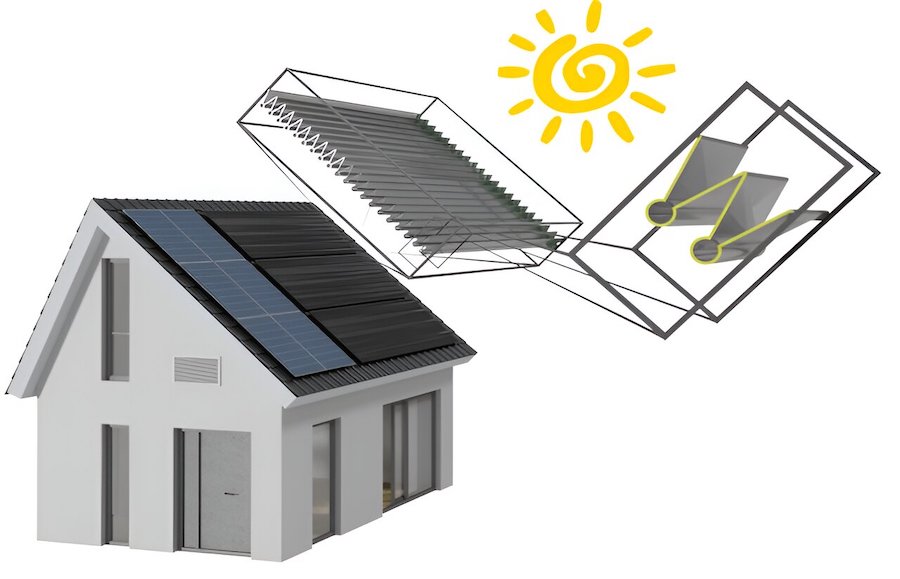Novel photoreactor technology inspires new generation of solar-powered devices

An international team of researchers has designed and implemented a new model for photoreactors, a solar-powered technology for converting water, carbon dioxide, methane and nitrogen into greener chemicals and fuels.
In a paper published in the journal Joule, the scientists explain that the innovative design allows the photoreactor to capture photons at high efficiency under varying sun directions, eliminating the need for sun-tracking. The panels are also manufacturable via extrusion of polymers, making them inexpensive and easily manufacturable at scale—all of which could help make a sustainable future more affordable and practical.
Unlike thermoreactors, photoreactors combine the photons in sunlight and reactants to generate green chemicals and fuels. By using sunlight and water, photoreactors could effectively reduce carbon emissions.
Despite their potential, many photoreactors have been plagued by issues such as the high cost of construction materials. They can also be inefficient in converting photons to products. To create these photochemical conversions, photoreactors rely on a photocatalyst, a material that absorbs light and converts a reactant into a product.
However, non-productive processes due to the reflection, scattering, transmission and absorption of light by the photocatalyst and the photoreactor materials can result in energy loss. Photoreactors would benefit from sun-tracking, a device that adjusts the angle of the photoreactor with respect to the position of the sun for optimal harvesting of light.
Creative solutions
To be technologically and economically viable, the photon-to-product conversion efficiency of the photoreactors must be at least 10%. While the science of integrating photocatalysts into photoreactors over the past decade for making green chemicals and fuels has yielded significant advances, the efficiencies have remained low—often one percent or less.
To address these issues, the team that included scientists from the University of Toronto and the Karlsruhe Institute of Technology (KIT) in Germany developed a panel-like photoreactor that contains hundreds of parallel microscale reaction channels.

A key feature of their design is that each reaction channel is connected to a V-shaped light-capture unit that guides the light into the channel where the photocatalyst is located. All surfaces are highly reflective to optimize the transport of photons from the external light source to the photocatalyst housed in the microchannels with minimal light losses.
This design allows the photoreactor to capture photons at high efficiency under varying sun directions, eliminating the need for sun-tracking. The panels are also manufacturable via extrusion of polymers, making them inexpensive and easily manufacturable at scale.
Future design adaptations can address the issue of intermittent sunlight by using light-emitting diodes integrated into the photoreactor as the photon source, powered by renewable electricity from photovoltaics and backed up by lithium-ion battery storage to provide 24-7 operations.
“This technology has inspired the development of a new generation of solar-powered devices that instead make green fuels such as hydrogen from sunlight and water,” Geoffrey Ozin, co-author of the study, said in a media statement.
The advancement comes at a time when the need to combat climate change is more pressing than ever, with record-breaking temperatures marked around the world this summer.
“These solar products will substitute their fossil-based analogs—and will help to reduce our carbon footprint,” Paul Kant, lead author of the study, said. “This directly increases the chances that we will be able to reach the dream of a sustainably living humanity. Hopefully, we will even make it in time—without drastic temperature overshoot and related disasters.”
{{ commodity.name }}
{{ post.title }}
{{ post.date }}

Comments